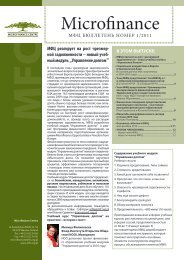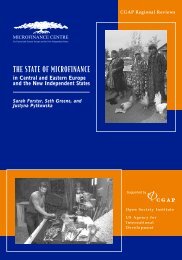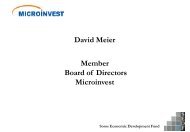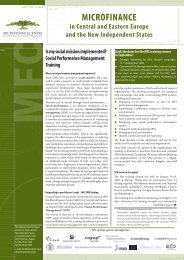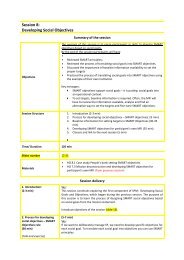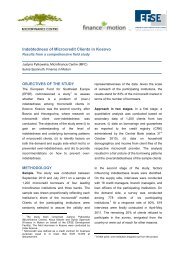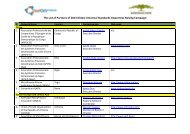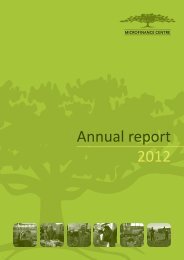Value Chains research report Tajikistan final - Microfinance Centre
Value Chains research report Tajikistan final - Microfinance Centre
Value Chains research report Tajikistan final - Microfinance Centre
You also want an ePaper? Increase the reach of your titles
YUMPU automatically turns print PDFs into web optimized ePapers that Google loves.
• It is not profitable for farmers to produce tomatoes for processing where the<br />
tomato prices are dictated by processing businesses and not by market forces. It<br />
is difficult for processors to pay higher prices for raw product as they are focused<br />
to sell to the lowest segment of the market which leaves little room for price<br />
negotiation.<br />
Payment is a serious problem for farmers. Frequently they are not paid for raw<br />
product for as much as a year and often in barter goods, not cash. Because of the<br />
problems in obtaining raw product over one half of the processors work 6 months or<br />
less per year and even when working they are operating at a much reduced capacity,<br />
many averaging below 66%.<br />
Processors face additional problems beyond low raw product supplies. They are:<br />
• Low quality of production;<br />
• Outdated equipment;<br />
• High cost of credit;<br />
• Lack of quality control throughout the supply chain;<br />
• Narrow internal market;<br />
• Irregular supply of raw materials and production; and<br />
• Lack of long-term contracts for product supply.<br />
The processing side will require significant investment before it achieves<br />
sustainability. Processors need to offer a higher quality product meeting consumer<br />
demand. To improve the processing industry outlook it is necessary to improve the<br />
produced output quality in taste, content stability, color, packaging and package. It is<br />
necessary to make substantial changes in the production and marketing sectors to<br />
change the status of existing and potential Tajik exporters. It is necessary to change the<br />
tomato production approach radically, and it should be started at the producer level.<br />
Processors must make contracts for the tomato varieties with long maturation periods,<br />
thereby ensuring raw materials for a longer time.<br />
In addition there are considerable challenges to developing a sustainable<br />
industry around them, both from a production and from a market perspective. These<br />
include:<br />
• Supply issues need to be addressed, such as raw product availability, quality<br />
and consistency of raw product, effective grading of product and appropriate<br />
inventory management of all components in the chain to minimize fluctuating<br />
demand/supply flows. Associated with supply is the question of sustainability and<br />
efficiency of wild-grown product and bush harvesting methods, which, while<br />
culturally extremely important, and should be fostered, are unlikely to be<br />
plausible as the only source of product in a commercially driven environment.<br />
• Sustainable and reliable linkage between out growers and the farm is critical.<br />
Hence, providing necessary support including different inputs, trainings and<br />
demonstrative farming are all provided by the farm to create strong linkage.<br />
However, there is lack of trust and reliability on out growers, due to the fact that<br />
out growers divert and sold the expected product to the market creating supply<br />
gap on company’s planned delivery.<br />
45




